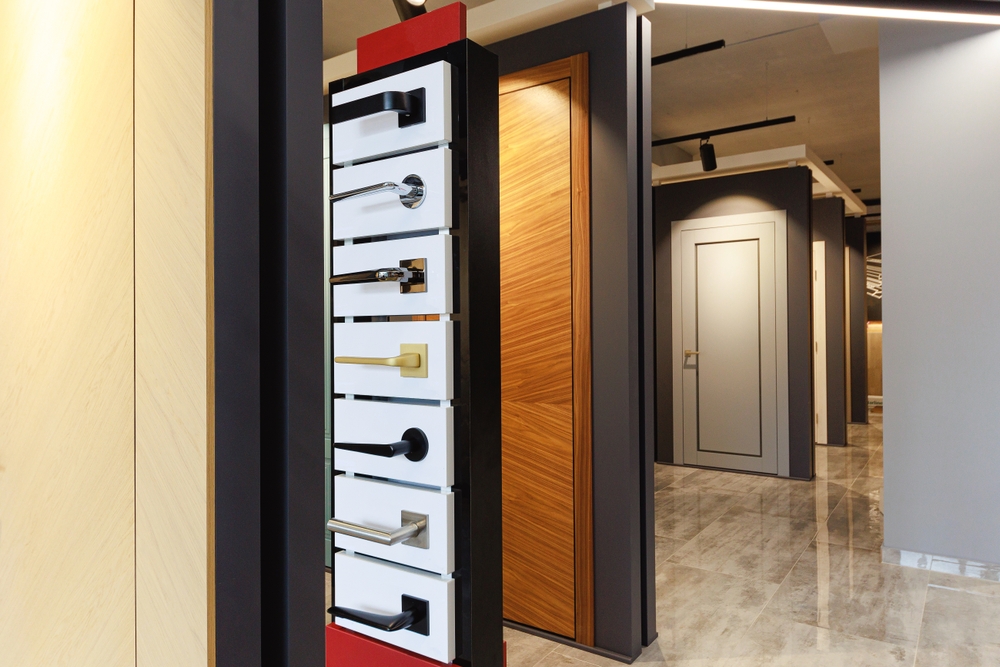When renovating or updating your property, a common question is whether you can mix and match different door handle styles throughout your home. Will it look stylish and intentional—or messy and mismatched? The truth is, with a bit of planning, mixing door handles is a modern design choice that adds personality and practicality to any property.
In this guide, Door Handle Company explains when and how to combine styles, what to consider for a cohesive look, and which options are most popular with UK homeowners.
Is Mixing Door Handle Styles a Good Idea?
Absolutely—if done thoughtfully. Modern interior design often features a blend of finishes, shapes, and handle types for a bespoke look. The key is to keep the overall scheme balanced and intentional.
For example, you might use sleek round rose handles in main living spaces, traditional backplate handles for bedrooms, and bold matt black handles for bathrooms or feature doors.
Benefits of Mixing Door Handles
- Customised character: Showcase your style by pairing classic and contemporary designs.
- Functional zoning: Use different handle types for specific areas—like pull handles on sliding doors or flush pulls on wardrobes.
- Highlighting features: Use a standout design for a key entrance, then subtler handles elsewhere.
- Adapting to renovations: When restoring period properties, mix new and original handles for an authentic yet practical finish.
How to Mix and Match Door Handle Styles Successfully
- Pick a Unifying Element:
Choose one consistent factor across all handles, such as finish (e.g., all satin chrome), shape (all levers), or a shared style (all minimalist or all traditional). - Stick to a Colour Palette:
Even if you vary handle shapes, keeping finishes in the same family (like brass, black, or chrome) maintains cohesion. - Zone by Room:
Use matt black handles in bathrooms, brass handles for bedrooms, and chrome handles in living areas. This makes transitions intentional rather than random. - Match Hinges and Accessories:
Pair handles with matching door hinges, escutcheons, and door stops for a polished effect. - Consider Door Function:
Lever on rose handles are ideal for high-traffic areas, while pull handles and dummy handles are better for cupboards and wardrobes.
Popular Ways to Combine Door Handle Styles
- Statement doors: Fit a feature matt black handle on your main bathroom or entrance, while using understated designs elsewhere.
- Period and modern mix: Combine Victorian scroll handles in heritage rooms with sleek chrome levers in extensions or contemporary spaces.
- Consistent finish, varied shape: Stick to one metal across all doors, but vary between levers and knobs for interest.
Tips for a Cohesive Look
- Limit to two or three handle styles in the same property for balance.
- Use accessories—like door stops, keyhole covers, and letter plates—in the same finish as your main handle to tie everything together.
- Shop by finish at Door Handle Company to see coordinated options.
Can You Mix Different Handle Types on the Same Door?
It’s best to avoid combining two different handle types (such as a lever and a knob) on opposite sides of the same door, unless it’s for a specific purpose (like a thumbturn on a bathroom door). For a professional look, both sides should use the same style and finish.
Swapping Handles Room by Room
If you want to update your property in stages, start with high-impact spaces like living rooms or the main entrance. The round rose handle collection and matt black range are popular for contemporary upgrades.
For period properties, try the traditional backplate range and door knobs to retain character.
Why Shop at Door Handle Company?
- Massive range of door handles in every style and finish
- Easy-to-browse by finish, type, or room
- Hinges, escutcheons, and accessories for the perfect finishing touch
- Friendly, expert advice—contact us for recommendations
Browse our latest handle ranges and start mixing and matching with confidence.

